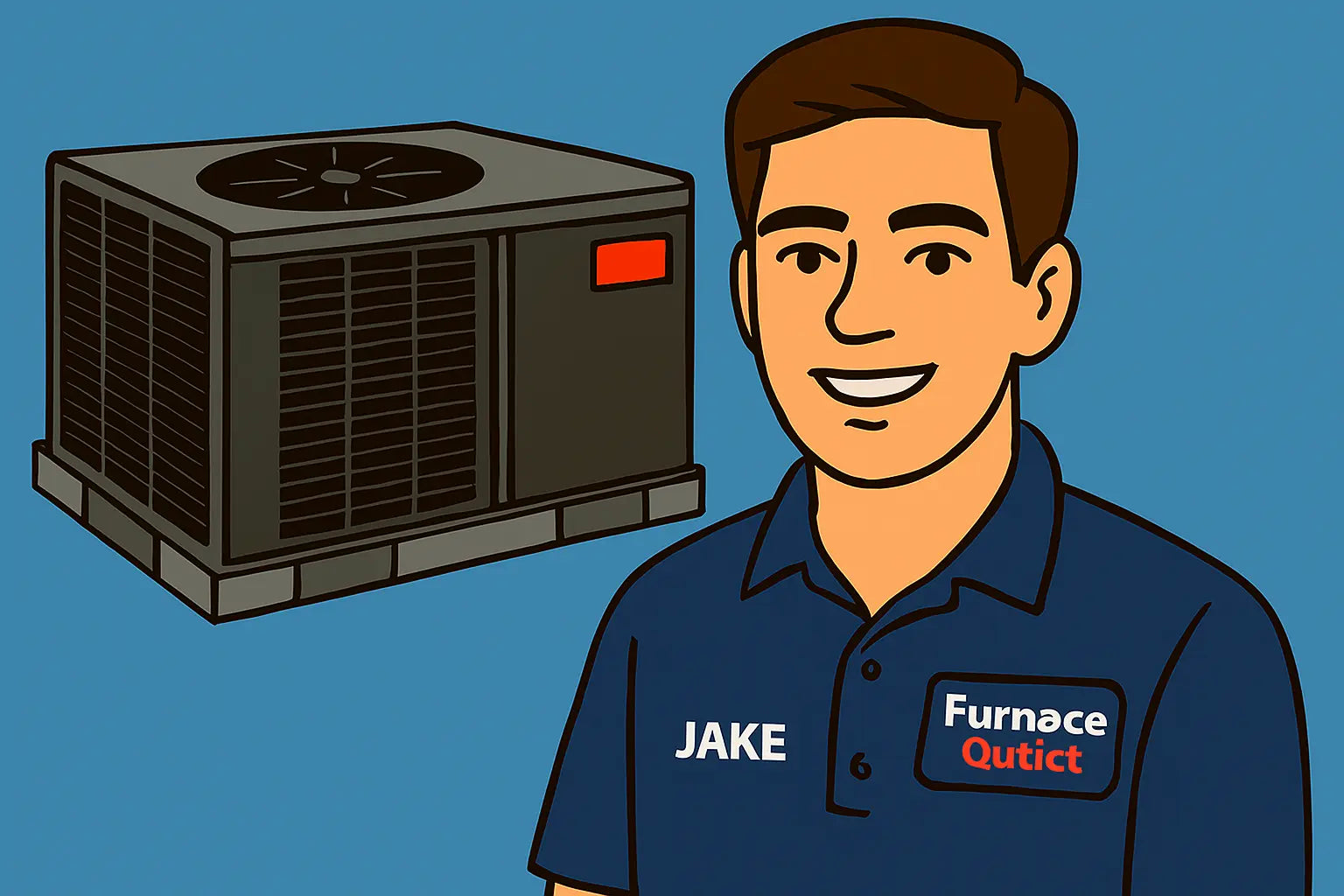Hey—it’s Jake.
Troubleshooting the Goodman GPCH33631 isn’t some mystical art. It’s logic, experience, and a little common sense…plus knowing where to poke, prod, and measure without getting zapped.
I’ve been on jobs where the homeowner’s “AC won’t start” turned out to be a tripped breaker. Other times, “AC won’t cool” meant dirty ducts, low refrigerant, or even a frozen coil. Today we’re going through the full spectrum—from no power to insufficient cooling—and I’ll show you how to troubleshoot like a pro without burning out the system…or yourself.
Step 1: “Won’t Start” — Electrical Checks
If your GPCH33631 won’t fire up at all, start with electricity. Common causes:
-
Breaker tripped: Check the main breaker and disconnect switch. Reset if necessary.
-
Loose or corroded connections: Inspect the line and control voltage wiring. Tighten all lugs.
-
Faulty thermostat or control board: Verify 24V control voltage is reaching the unit.
-
Capacitor issues: A failed start/run capacitor can keep the compressor and blower from spinning.
Always make sure power is off before touching terminals. The Electrical Safety Foundation International has excellent safety guidance if you need a refresher.
Step 2: “Unit Starts but Blower Doesn’t Run”
Sometimes the unit will hum or click but the air handler blower won’t start:
-
Check blower motor wiring and capacitor.
-
Inspect the fan relay on the control board.
-
Make sure the evaporator coil’s freeze-stat isn’t tripped.
AC Service Tech LLC has a good breakdown of common blower motor troubleshooting tips that are easy to follow.
Step 3: “Compressor Runs but No Cooling”
If your compressor is running but the system isn’t cooling:
-
Check refrigerant pressures with your gauges. Low refrigerant could indicate a leak.
-
Inspect the evaporator coil for frost or ice—could mean low airflow or a TXV issue.
-
Measure supply and return airflow to ensure ducts aren’t restricted.
-
Verify condenser fan operation—if the outside fan isn’t spinning, heat exchange won’t happen properly.
The Department of Energy’s AC efficiency guide is a great resource to understand how airflow, refrigerant, and condenser operation interact.
Step 4: Detecting and Diagnosing Leaks
R-32 leaks in the GPCH33631 can lead to gradual performance loss. To check:
-
Perform a nitrogen pressure test before adding refrigerant.
-
Use an electronic leak detector rated for A2L refrigerants.
-
Inspect all brazed joints and service valves.
The EPA Section 608 regulations require proper leak handling and documentation, so follow their safety guidelines strictly.
Step 5: Airflow Troubleshooting
Insufficient cooling often comes from poor airflow:
-
Check return air pathways—blocked or undersized returns can starve the coil.
-
Inspect ducts for leaks or crushed flex runs.
-
Clean filters and coil surfaces. Dirty evaporator coils increase static pressure and reduce efficiency.
-
Ensure supply vents are open and unobstructed.
The National Comfort Institute has detailed guides for measuring CFM and balancing airflow, which can save you hours of guessing.
Step 6: Condensate & Drainage Issues
Sometimes “won’t cool” symptoms are actually drainage problems:
-
Check the condensate drain pan for clogs or overflows.
-
Verify that the condensate pump (if present) is functioning.
-
Inspect the unit’s slight pitch toward the drain line; improper leveling can lead to water backup.
Step 7: Control & Sensor Checks
If electrical and airflow systems check out, look at control devices:
-
Thermostat calibration: Make sure it’s calling for the correct mode and temperature.
-
High-limit switch: If tripped, the system may shut down to prevent overheating.
-
Pressure switches: Low-pressure cutout can prevent compressor operation if refrigerant is low.
Step 8: When to Call a Pro
Some problems—like hard-starting compressors, refrigerant leaks, or control board failures—require an experienced tech and proper recovery equipment. Don’t risk R-32 handling violations or compressor damage. Mike Holt’s electrical training is a good resource if you want the technical details before calling it in.
Step 9: Preventive Measures
After troubleshooting, keep your GPCH33631 running smoothly:
-
Change filters regularly.
-
Inspect ductwork and vents annually.
-
Schedule coil cleaning and refrigerant checks.
-
Verify electrical connections are tight.
Preventive maintenance avoids most of the “won’t start” or “won’t cool” headaches.
Goodbye from Jake
Troubleshooting the GPCH33631 is really about working methodically, knowing where to start, and not letting small issues snowball into expensive repairs.
If you need the specs, wiring diagrams, or want to see the unit I’m talking about, check out the Goodman GPCH33631 product page. Keep it handy for reference while you’re diagnosing.
Need a seasonal maintenance for this unit? Visit my guide: Keep Your Horizontal Goodman Running Strong.
Stay safe, work smart, and enjoy that “fixed it” feeling.
- Jake out 🍺







